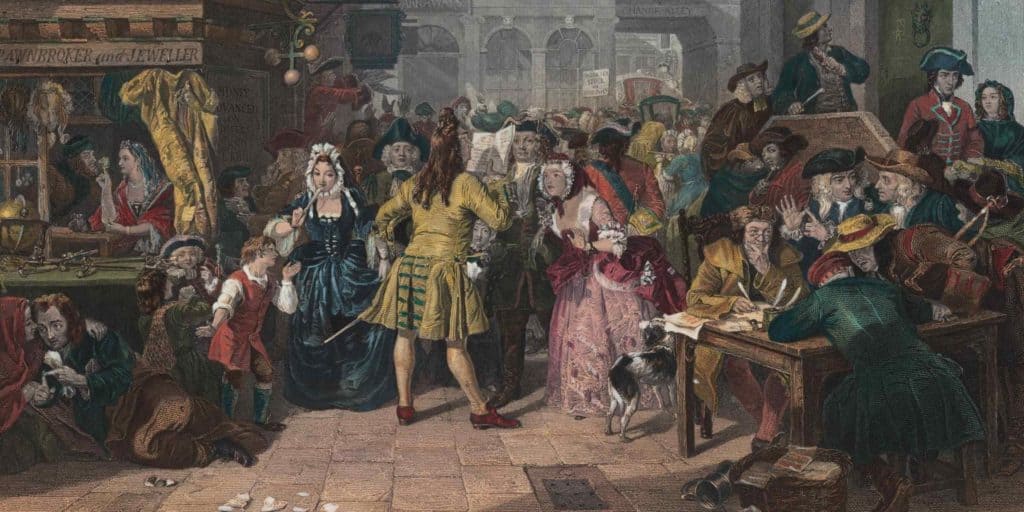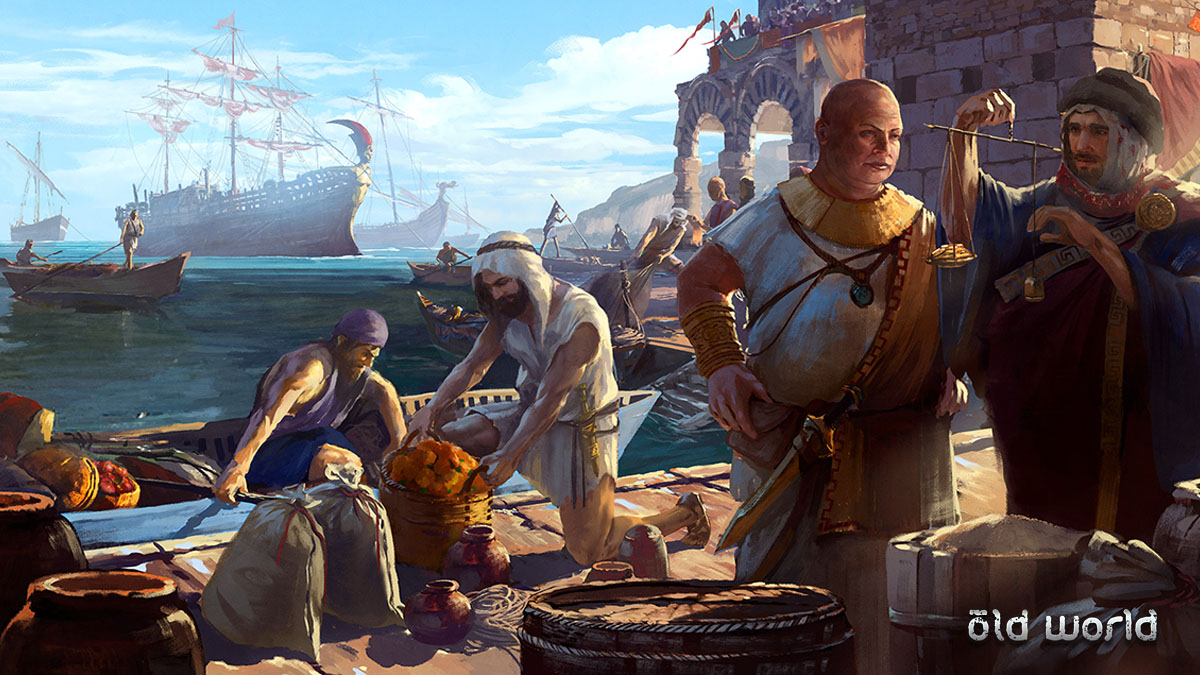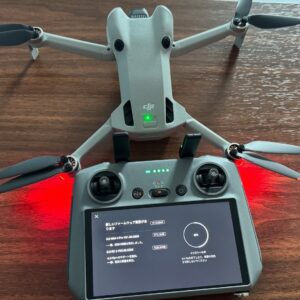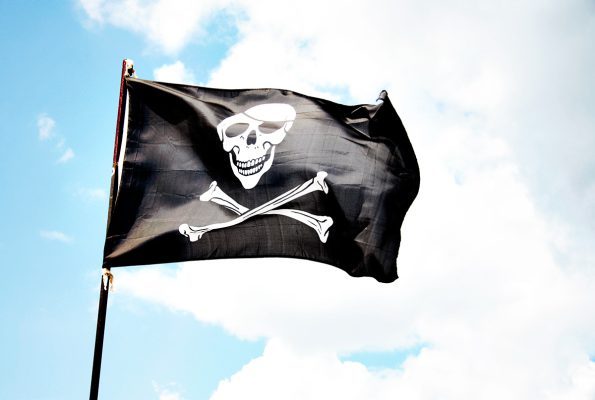 Pin
Pin A FAST-MOVING ship appears on the horizon. She flies a skull and crossbones flag! The ship draws alongside and hordes of bearded ruffians with gold rings in their ears and daggers between their teeth swarm on board. They plunder the hold for booty, make the crew walk the plank and send the ship to the bottom, returning to their desert island to bury their stolen treasure in a chest under the sand. . . This is the traditional image of the pirate, gained from adventure stories like Treasure Island and countless Hollywood movies. But the real pirates of the South Seas were very different. Hunters-on-land turned hunters-by-sea, they were equally as colourful as their fictional counterparts, and often were a great deal more cruel and ruthless.
At the beginning of the seventeenth century, a number of men from different parts of Europe settled on the island of Hispaniola (now Haiti and the Dominican Republic). They were sailors who had deserted their ships, religious refugees, runaway slaves — all masterless men who made a living by hunting the vast herds of wild cattle that roamed the island’s northern shore.
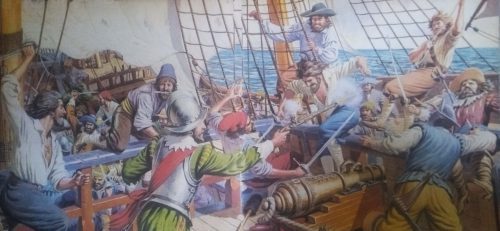 Pin
Pin They were given the nickname ‘buccaneers’ from the way they preserved the meat that they killed. This was hung in strips over a frame and dried, a process learned from the native Carib Indians. The Indians called the frame a ‘boucan’, so the white hunters became known as ‘boucaniers’. They lived by a strict code of conduct to prevent disputes among themselves. For example, on a hunting-trip, no man was allowed to eat a mouthful of food until as many beasts as there were hunters had been killed. This Code, known as ‘The Custom Of The Coast’, was strictly enforced and made the buccaneers a strong and united body of men.
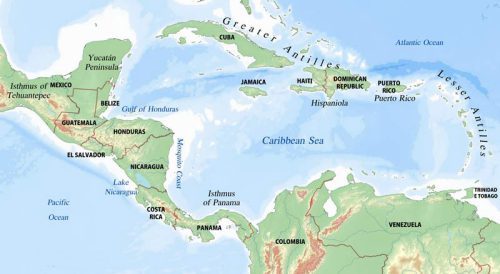 Pin
Pin Spain was the dominant European power in the Caribbean at this time. The Conquistadores under Cortes had overrun the Aztecs in nearby Mexico and the whole area was part of the great Spanish Empire. Every year, a treasure fleet set sail for Seville, heavily laden with gold plate. They were a tempting prize. And when the Spanish drove the buccaneers from their hunting-grounds in Hispaniola, the outlaws settled on the small, rocky island of Tortuga and, in the 1630s, began attacking the treasure ships that passed them by. At first they put to sea in large, dug-out canoes. Being professional hunters, they were crack shots — it is reported they could hit a coin spinning in the air — and they would attack a huge, cannon-firing galleon, armed with only pistols and long-barrelled muskets. Later, they built one or two-masted sailing ships with flat-bottomed hulls that enabled them to lurk in the shallow waters along the coast of the Spanish Main. The spoils from each ship were divided up fairly and justly, in accordance with The Custom Of The Coast. But the buccaneers failed to show the same respect to their unfortunate captives who were tortured and killed in a variety of barbaric ways.
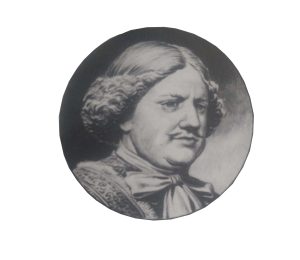 Pin
Pin Kidnapped in Bristol and sold into slavery, Morgan escaped and joined the buccaneers, eventually becoming their leader. He was a brilliant sea captain and soldier. Charles II ignored Spanish complaints against him and in 1674 knighted him, making him lieutenant-governor of Jamaica where he also served as Commander-in-Chief till his death.
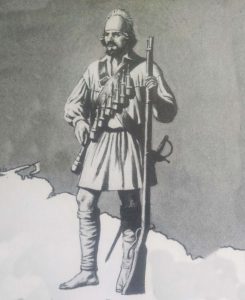 Pin
Pin AN ORIGINAL BUCCANEER (boucanier)
From the early 1630s the island of Tortuga was occupied by wild adventurers of many European nationalities who lived a simple, sparse existence till they discovered the wealth of Spanish treasure ships.
The buccaneers were not Spain’s only enemy in this area of the world. The English, French and Dutch were all extending their Empires in the New World and were eager to take from Spain as much as they could. They saw the buccaneers as their allies. Step by step, the pirates were taken over by the various European powers. They were encouraged to leave their hazardous, free-wheeling life for the sake of a safe harbour where they could spend their plundered wealth in the shops and bars. As time went on and the treasure fleets grew fewer, they were then persuaded to mount attacks on neighbouring Spanish cities. Between 1655 and 1671, the buccaneers sacked eighteen cities, four towns and thirty-five villages on the Spanish mainland. This greatly pleased the governments of England, France and Holland, for not only did it weaken their Imperial rival, but also a great deal of the plunder found its way back to the Treasuries of the countries concerned.
 Pin
Pin SWIVEL GUN also known as a raker or murdering piece. It was frequently used to fire small shot such as nuts and bolts, nails and anything else that would maim.
 Pin
Pin GRAPNELS were used both for anchoring a vessel and for fixing it to any ship under attack.
The most famous figure during these years — the heyday of the buccaneers — was a Welshman, Henry Morgan. Sent out to the West Indies as a young lad, he was master of his own ship by 1665, doubtless bought from the proceeds of piracy. Morgan was friendly with the Governor of Jamaica, Sir Thomas Modyford, who gave the pirate leader a free hand to mount a series of daring raids which culminated in the capture and burning of Panama City. This Spanish stronghold had always been safe from attack by pirates, being on the western Pacific coast of the Isthmus of Panama. But Morgan’s force landed on the eastern shore, marched overland and looted the city which was burned to the ground. The Spanish were outraged and, to pacify them, King Charles II had Morgan arrested and brought back to England. But he was welcomed at Court and, in 1674, he was knighted and sent back to Jamaica as Deputy Governor. But the sack of Panama City heralded the end of the buccaneer era. Morgan failed to divide up the spoils of his piracy in the manner of the old Custom Of The Coast and, now little more than pawns in the hands of their respective governments, the buccaneers were absorbed into their countries’ navies.
But their exploits were not forgotten. A Dutchman called Alexander Exquemelin wrote a book about them which was widely read in its day and insured that the buccaneers left their mark on history. Interest in them inspired later voyages of exploration in the Pacific and led to the foundation of the South Sea Company.
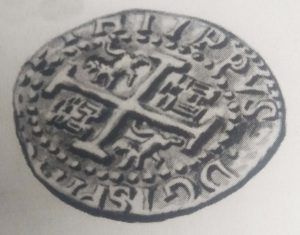 Pin
Pin 
CUTLASS
The most favoured weapon of all seamen, whether regular navy or pirate. A heavy, ungainly weapon but still deadly in the right hands.
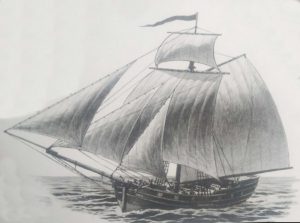 Pin
Pin CUTTER RIGGED SLOOP
A fast vessel used by smugglers, pirates, royal navy and customs men alike. They usually carried too much sail for safety and were hard to handle. Buccaneers’ sloops were of shallow draught so that, they could foil pursuers who could not follow into shallow waters.
 Pin
Pin THE JOLLY ROGER is mainly a fiction. It was simpler and cheaper for pirates to fly a simple black flag.
The Buccaneers
The Buccaneers were a group of pirates and privateers who operated in the Caribbean Sea and along the coasts of Central and South America during the late 17th and early 18th centuries. They were known for their ruthless attacks on Spanish ships and settlements in their search for riches.
The term “buccaneer” originated from the French word “boucan,” which referred to a wooden frame on which meat was smoked. The buccaneers were initially hunters and pioneers who settled on the island of Hispaniola (present-day Haiti and Dominican Republic) and survived by hunting wild boars and cattle. They would smoke the meat on buccan frames, which became their main source of trade with passing ships.
However, as the lucrative Spanish trade routes became better protected, the buccaneers turned to piracy. They formed a loose confederation known as the Brethren of the Coast, comprised of pirates from various nationalities such as France, England, and the Netherlands. These pirates targeted Spanish galleons carrying valuable goods from the New World back to Europe.
The buccaneers were known for their daring attacks and their ability to operate in the treacherous waters of the Caribbean. They often used small, fast ships called “sloops” or “brigantines,” which allowed them to outrun larger vessels. They employed various tactics such as surprise attacks, boarding actions, and guerrilla warfare to seize their targets.
One of the most famous buccaneers was Henry Morgan, a Welsh privateer who conducted successful raids on Spanish colonies and amassed a great fortune. Morgan’s raids included the sack of Panama City in 1671, which greatly enhanced his fame and wealth.
Despite their reputation as ruthless pirates, the buccaneers played a significant role in the geopolitical landscape of the time. They weakened Spanish influence in the region, helped establish English and French colonies, and disrupted Spanish trade routes. Their actions contributed to the weakening of the Spanish Empire’s hold on the Americas.
Eventually, as European powers sought to stabilize the region and establish more control, the buccaneering era came to an end. Treaties and agreements were made between European nations, leading to the decline of piracy in the Caribbean. Many buccaneers retired or joined legitimate privateering expeditions, while others were captured or killed.
The true story of the South Sea Pirates, as the Buccaneers are sometimes referred to, is one of adventure, danger, and the struggle for wealth and power in the Caribbean. Their exploits and legends have captured the imagination of people for centuries, making them a significant part of pirate lore.
The Buccaneers' activities had a significant impact on trade and colonization in the South Seas region. Here are some ways in which they influenced these aspects:
 Pin
Pin
Disruption of Trade Routes
Copied
Disruption of Trade Routes
Buccaneers like Henry Morgan and Francis Drake targeted Spanish ships carrying valuable goods from the American colonies to Europe. By capturing or sinking these vessels, they disrupted Spanish trade routes and created economic instability in the region. This led to a decline in Spanish influence and opened up new opportunities for other European powers in the South Seas.
Buccaneers like Henry Morgan and Francis Drake targeted Spanish ships carrying valuable goods from the American colonies to Europe. By capturing or sinking these vessels, they disrupted Spanish trade routes and created economic instability in the region. This led to a decline in Spanish influence and opened up new opportunities for other European powers in the South Seas.
Buccaneers like Henry Morgan and Francis Drake targeted Spanish ships carrying valuable goods from the American colonies to Europe. By capturing or sinking these vessels, they disrupted Spanish trade routes and created economic instability in the region. This led to a decline in Spanish influence and opened up new opportunities for other European powers in the South Seas.
Weakening of Spanish Colonization
Copied
Weakening of Spanish Colonization
As the Buccaneers targeted Spanish colonies in the Caribbean and South America, they weakened Spanish control over these territories. Their raids and attacks forced the Spanish to divert resources from colonization efforts to protect their colonies. This created an opportunity for other European powers, particularly the English and the French, to establish their own colonies in the region.
As the Buccaneers targeted Spanish colonies in the Caribbean and South America, they weakened Spanish control over these territories. Their raids and attacks forced the Spanish to divert resources from colonization efforts to protect their colonies. This created an opportunity for other European powers, particularly the English and the French, to establish their own colonies in the region.
As the Buccaneers targeted Spanish colonies in the Caribbean and South America, they weakened Spanish control over these territories. Their raids and attacks forced the Spanish to divert resources from colonization efforts to protect their colonies. This created an opportunity for other European powers, particularly the English and the French, to establish their own colonies in the region.
Encouragement of Privateering and Legalized Piracy
Copied
Encouragement of Privateering and Legalized Piracy
In response to the activities of the Buccaneers, European powers started issuing privateering licenses, essentially legalizing piracy. These licenses allowed individuals to attack enemy ships and keep a portion of the spoils. This increased privateering activity in the South Seas and further disrupted trade by creating an environment of constant threat for merchant vessels.
In response to the activities of the Buccaneers, European powers started issuing privateering licenses, essentially legalizing piracy. These licenses allowed individuals to attack enemy ships and keep a portion of the spoils. This increased privateering activity in the South Seas and further disrupted trade by creating an environment of constant threat for merchant vessels.
In response to the activities of the Buccaneers, European powers started issuing privateering licenses, essentially legalizing piracy. These licenses allowed individuals to attack enemy ships and keep a portion of the spoils. This increased privateering activity in the South Seas and further disrupted trade by creating an environment of constant threat for merchant vessels.
Increased European Interest in the South Seas
Copied
Increased European Interest in the South Seas
The Buccaneers' successful attacks on Spanish riches sparked a frenzy among European nations to tap into the wealth of the South Seas region. Other European powers, especially the English and the French, began commissioning their own privateering expeditions and establishing colonies to exploit the resources of the area. This led to a renewed focus on trade and colonization, with numerous expeditions and settlements being established throughout the South Seas.
The Buccaneers' successful attacks on Spanish riches sparked a frenzy among European nations to tap into the wealth of the South Seas region. Other European powers, especially the English and the French, began commissioning their own privateering expeditions and establishing colonies to exploit the resources of the area. This led to a renewed focus on trade and colonization, with numerous expeditions and settlements being established throughout the South Seas.
The Buccaneers’ successful attacks on Spanish riches sparked a frenzy among European nations to tap into the wealth of the South Seas region. Other European powers, especially the English and the French, began commissioning their own privateering expeditions and establishing colonies to exploit the resources of the area. This led to a renewed focus on trade and colonization, with numerous expeditions and settlements being established throughout the South Seas.
Development of New Trade Networks
Copied
Development of New Trade Networks
The Buccaneers, by disrupting Spanish trade routes, inadvertently created new trade networks. European powers sought alternative routes to transport goods and avoid attacks by Buccaneers. This resulted in the exploration of new sea routes and the establishment of trading posts and colonies along these routes, enhancing trade in the South Seas region.
The Buccaneers, by disrupting Spanish trade routes, inadvertently created new trade networks. European powers sought alternative routes to transport goods and avoid attacks by Buccaneers. This resulted in the exploration of new sea routes and the establishment of trading posts and colonies along these routes, enhancing trade in the South Seas region.
The Buccaneers, by disrupting Spanish trade routes, inadvertently created new trade networks. European powers sought alternative routes to transport goods and avoid attacks by Buccaneers. This resulted in the exploration of new sea routes and the establishment of trading posts and colonies along these routes, enhancing trade in the South Seas region.
The activities of the Buccaneers in the South Seas region had a far-reaching impact on trade and colonization. They weakened Spanish influence, encouraged privateering and legal piracy, and sparked increased European interest in the region. These factors led to the establishment of new trade networks and the colonization of the South Seas by various European powers.
The Buccaneers were a group of pirates who operated in the 17th and 18th centuries, primarily in the Caribbean and along the South American coast. They employed various tactics to successfully raid and plunder ships and coastal settlements in the South Seas.
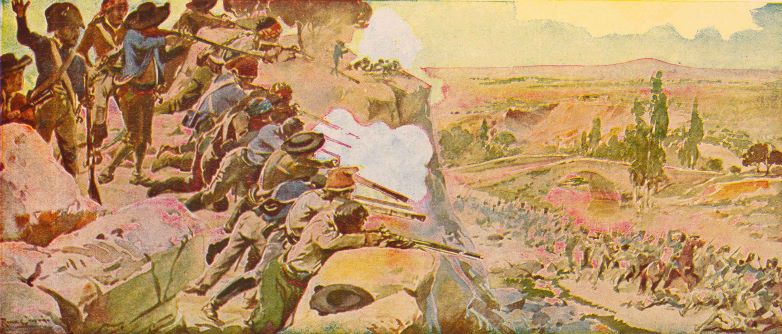 Pin
Pin - Privateering: Many Buccaneers, especially in the early days, received official authorization from European governments as privateers. They were granted “Letters of Marque,” which allowed them to attack and seize enemy ships during times of war. This gave the Buccaneers legal backing and made their activities appear semi-legitimate.
- Mutual Cooperation: Buccaneers often formed alliances or joint expeditions to increase their chances of success. They established base camps or strongholds, such as Port Royal in Jamaica or Tortuga in Haiti, where they could plan and prepare for both sea and land attacks. By pooling their resources and working together, they were able to raid larger targets and protect each other in case of retaliation.
- Swift and Agile Ships: The Buccaneers employed fast and maneuverable ships called “Buccaneers” or “Sloops.” These vessels, often converted merchant ships or captured enemy vessels, were optimized for speed and could navigate shallow waters. Their swiftness allowed them to ambush slower merchant ships and escape pursuit.
- Surprise Attacks: Buccaneers were known for their use of surprise attacks. They would often disguise their ships as merchant vessels, flying friendly flags until they were within striking distance. Once close, they would hoist the Jolly Roger (a pirate flag) to signal their true intentions and launch their attack.
- Guerilla Warfare Tactics: On land, Buccaneers employed guerilla warfare tactics to raid and plunder coastal settlements. They would land their crews, often disguised as local fishermen or traders, in small groups at night, attacking settlements while their defenders were least prepared. They often targeted undefended or weakly guarded towns, taking advantage of the element of surprise and swiftly overwhelming resistance.
- Psychological Warfare: Buccaneers utilized fear and intimidation to their advantage. By engaging in brutal and violent acts, such as torture and public executions, they hoped to break the resolve of their enemies and discourage resistance. This psychological warfare made it more likely for their targets to surrender without a fight.
- Intelligence Gathering: Buccaneers relied on intelligence gathering to identify potential targets. They would gather information from captured ships’ crews, spies, and sometimes even local sources. This allowed them to identify ships carrying valuable cargo or wealthy coastal settlements worth plundering.
All these tactics combined made the Buccaneers formidable and successful raiders and plunderers in the South Seas. However, their activities eventually declined as European governments cracked down on piracy, and naval forces became more organized in combating them.
The Buccaneers were a group of pirates who operated primarily in the Caribbean during the late 17th and early 18th centuries. Their era came to an end in the context of the South Sea Pirates due to several factors.
-
01
Changing geopolitical conditions
The South Sea Buccaneers, as they were known, flourished during a time of intense conflict between European nations, particularly England, France, and Spain. These nations often funded and supported the Buccaneers as privateers, granting them licenses to attack enemy vessels. However, over time, these nations began signing treaties and forming alliances, leading to reduced hostilities and the end of state-sanctioned piracy.
CopiedChanging geopolitical conditionsThe South Sea Buccaneers, as they were known, flourished during a time of intense conflict between European nations, particularly England, France, and Spain. These nations often funded and supported the Buccaneers as privateers, granting them licenses to attack enemy vessels. However, over time, these nations began signing treaties and forming alliances, leading to reduced hostilities and the end of state-sanctioned piracy.
-
02
Decline in merchant shipping
As piracy activities decreased in the Caribbean due to increased naval presence and security, there was a decline in merchant shipping in the region. With fewer targets, the Buccaneers struggled to find lucrative opportunities and sustain their piracy operations.
-
03
Internal divisions and conflicts
The Buccaneers were a loose confederation of pirates with varying motives and allegiances. As their existence became more precarious, internal conflicts arose, leading to divisions among the pirates. Some Buccaneers turned to honest work or retired, while others sought new opportunities elsewhere.
CopiedInternal divisions and conflictsThe Buccaneers were a loose confederation of pirates with varying motives and allegiances. As their existence became more precarious, internal conflicts arose, leading to divisions among the pirates. Some Buccaneers turned to honest work or retired, while others sought new opportunities elsewhere.
-
04
The rise of the South Sea Pirates
The Buccaneers’ era came to an end, particularly in the context of the South Sea Pirates, with the emergence of new pirate groups in different regions. The South Sea Pirates, operating in the Pacific Ocean, offered a new frontier for piracy and attracted many Buccaneers who were seeking fresh opportunities. These South Sea Pirates had different strategies and targeted different prey, and as a result, the Buccaneers’ influence and significance gradually diminished.
CopiedThe rise of the South Sea PiratesThe Buccaneers' era came to an end, particularly in the context of the South Sea Pirates, with the emergence of new pirate groups in different regions. The South Sea Pirates, operating in the Pacific Ocean, offered a new frontier for piracy and attracted many Buccaneers who were seeking fresh opportunities. These South Sea Pirates had different strategies and targeted different prey, and as a result, the Buccaneers' influence and significance gradually diminished.
The downfall of the Buccaneers and the end of their era in the context of the South Sea Pirates can be attributed to changing geopolitical conditions, a decline in merchant shipping, internal divisions, and the emergence of new pirate groups in different regions.
Frequently Asked Questions : The Buccaneers of the South Seas
The Buccaneers were a group of pirates who operated in the South Seas during the late 17th and early 18th centuries. They were primarily English, French, and Dutch adventurers who engaged in piracy and privateering activities in the Caribbean and along the coasts of Central and South America.
The term “buccaneer” originated from the French word “boucanier,” which referred to the meat smoking techniques used by hunters and herders in the West Indies. These adventurers, initially, relied on hunting wild cattle on the islands and smoking meat to sustain themselves. Eventually, some of them turned to piracy and became known as buccaneers.
There were several motivations behind the Buccaneers’ piracy. Many of them were driven by the desire for wealth and fortune. The spoils from their raids on Spanish ships and settlements, including gold, silver, and valuable goods, made them one of the wealthiest pirate groups of the era. Additionally, some Buccaneers were motivated by a sense of adventure, seeking the thrill and excitement of the high seas.
The Buccaneers operated in a similar manner to other pirates of the time. They would often attack and plunder Spanish ships and coastal towns, taking prisoners and seizing valuable cargoes. They were known for their manpower, often using small, fast ships called sloops or schooners to maneuver swiftly and surprise their targets. They utilized their knowledge of the local waters and the element of surprise to maximize their success.
While many Buccaneers acted independently, some were officially sanctioned by European powers. The most famous example is the English privateer Henry Morgan, who was given direct authorization by the English government to conduct raids on Spanish territories in the Caribbean. These privateers were essentially pirates with a legal backing, as they were granted “letters of marque” which authorized their actions.
The Buccaneers had a significant impact on the Spanish Empire during their active years. Their constant raids and attacks disrupted Spanish trade routes, leading to financial losses for the empire. The Spanish also had to divert military resources to protect their colonies and shipping routes, weakening their overall defense. The Buccaneers’ actions contributed to the decline of the Spanish Empire’s dominance in the South Seas.
While the Buccaneers did not have an official governing body or a formal code of conduct like the later pirates of the Golden Age, they did adhere to certain unwritten rules. For example, they practiced a form of democracy, electing their captains and decision-making through votes. They also had a system of profit-sharing, with equal division of loot among the crew members. However, individual Buccaneers still had the freedom to act as they pleased, leading to occasional instances of violence and lawlessness.
The era of the Buccaneers came to an end with the signing of the Treaty of Utrecht in 1713. This treaty ended the War of the Spanish Succession, and one of its provisions was the cessation of privateering against Spain. With the loss of legal backing and the increased enforcement efforts by various naval powers, piracy in the South Seas declined significantly. Many former Buccaneers either retired or turned to more legitimate activities.
Yes, several Buccaneers gained notoriety for their activities. Some notable names include Henry Morgan, François l’Olonnais, Bartholomew Roberts, and Rock Brasiliano. These individuals were known for their daring raids, brutality, and accumulation of wealth and were both feared and celebrated during their time.
There are limited remains and artifacts from the Buccaneers’ era due to the nature of piracy and the passage of time. However, some shipwrecks believed to belong to Buccaneers have been discovered, such as the wreck of the Queen Anne’s Revenge, the flagship of the infamous pirate Blackbeard. Additionally, various historical accounts, documents, and artifacts can be found in museums and archives, shedding light on this exciting and adventurous chapter in history.



















